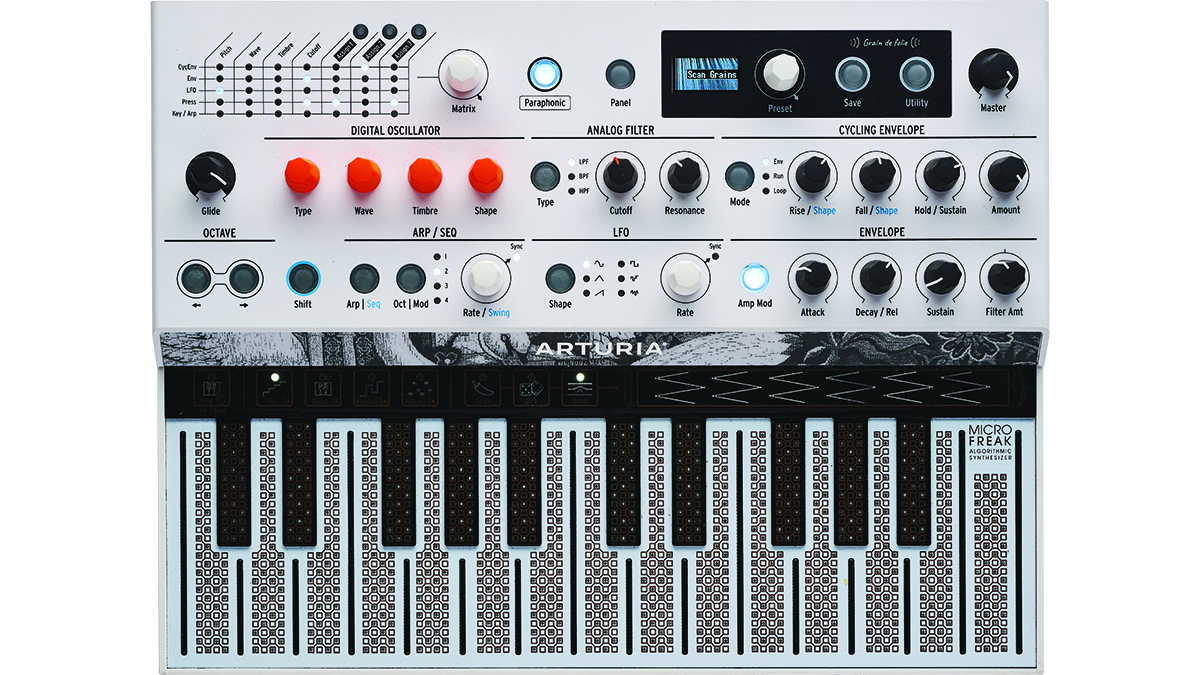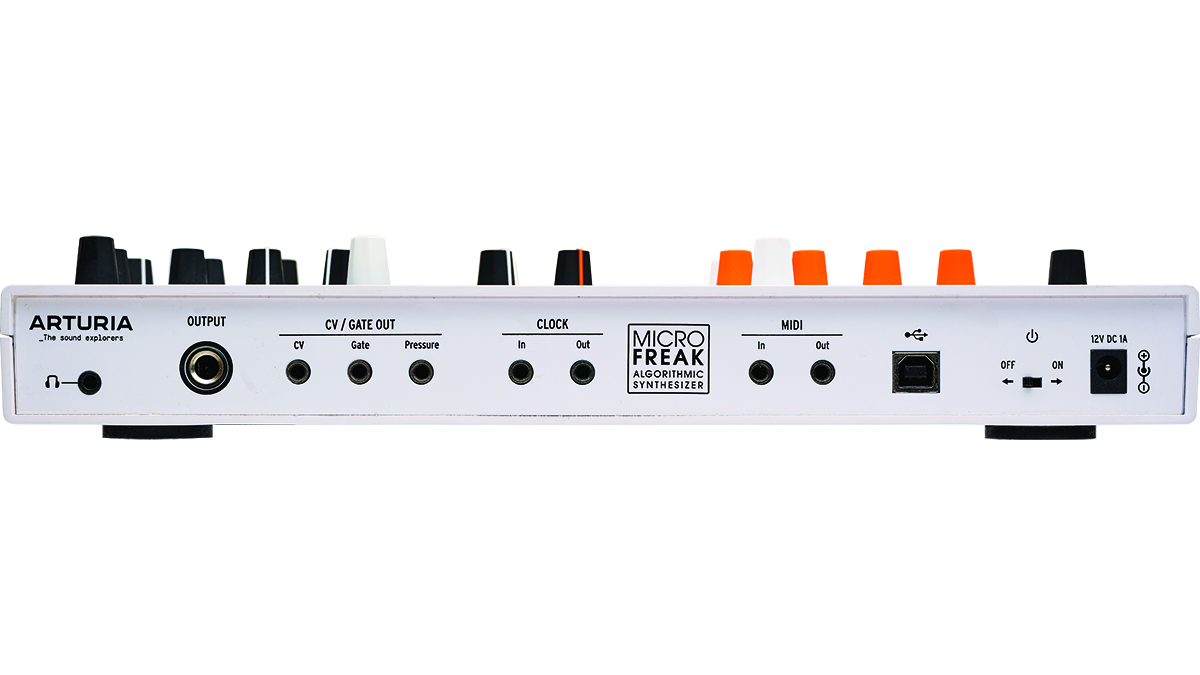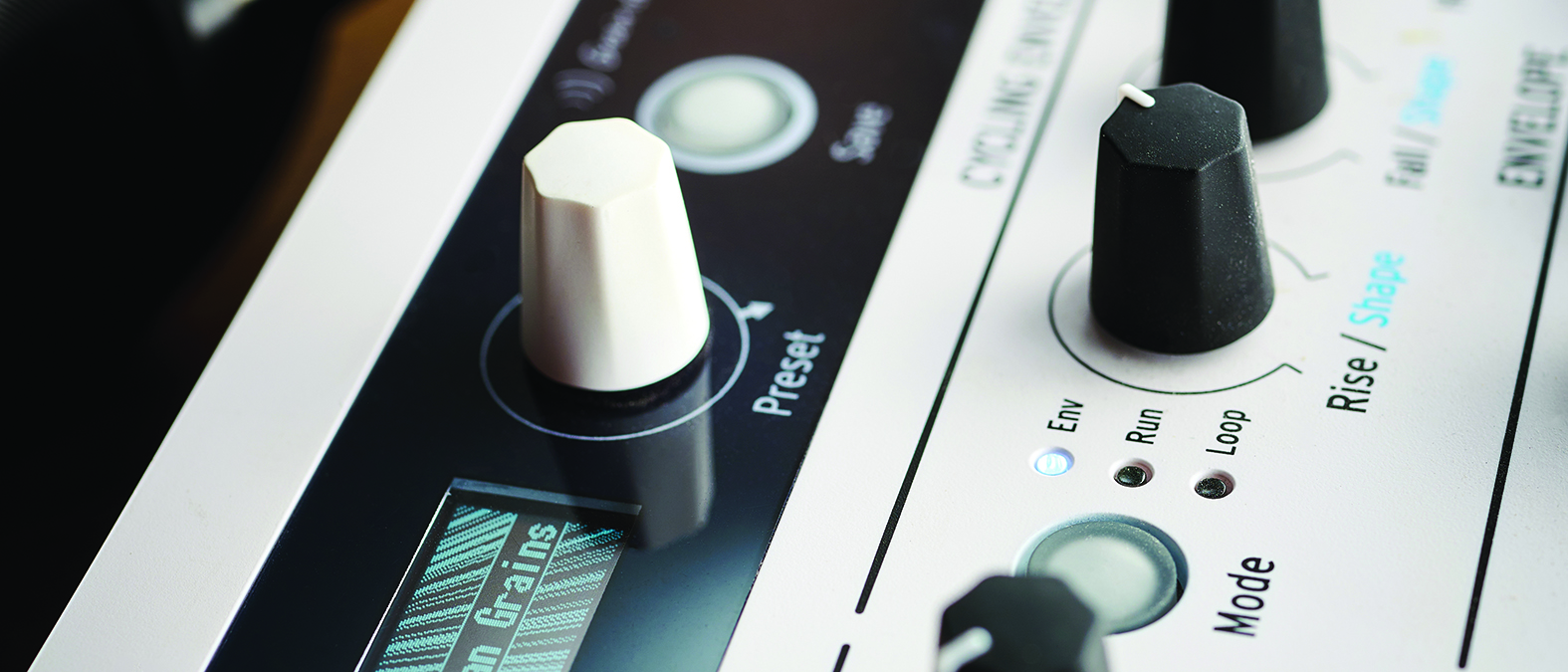MusicRadar Verdict
MicroFreak v5 is another substantial and genuinely useful update to what was already a bargain synth.
Pros
- +
Granular synthesis modes are great for glitchy, IDM-style tones.
- +
Sample upload significantly broadens the sonic palette.
- +
Snappy envelopes are great for shaping percussive tones.
Cons
- -
Control over sample playback is slightly limited.
MusicRadar's got your back
Arturia MicroFreak v5: What is it?
You have to admire Arturia’s commitment to the MicroFreak. It was already an impressive instrument when it landed in 2021, combining an analogue filter with a multitude of digital oscillator modes that brought a touch of Eurorack-inspired eccentricity to the budget synth realm.
Its capabilities have continued to grow since launch though, with various firmware updates adding new presets, improved modulation and additional engine modes, including a vocoder. Now it’s received yet another major update – arguably its most significant yet.

Arturia MicroFreak v5: Performance and verdict
The headline features of v5 are a quartet of sample synthesis modes. The first of these, simply named Sample, is the most straightforward. This turns the digital oscillator into a looping sample player – making use of one-shot samples, as opposed to the existing wavetable modes. As with other modes, the sound can be shaped using the Wave, Timbre and Shape dials, which here control sample start and end points and loop length, respectively.
The remaining are a trio of granular synthesis modes, differentiated by the way they read the sample’s grains. These are named Scan Grains, Cloud Grains and Hit Grains. The first of these offers what could probably be called ‘standard’ granular synthesis. Here the Wave control adjusts the speed at which the oscillator scans through the sample, Timbre alters the density of waves generated and Shape applies randomness to the size, distribution and pitch of the grains. A soft volume envelope is applied to grain playback, resulting in a sound that stutters slightly without being too abrupt.
Cloud Grains, as its name implies, specialises in creating granular cloud effects, whereby the close proximity of grains creates a soft, ambient effect. Here the Wave control switches to adjusting the start position from which grains are collected, allowing users to home in on a particular tone or texture within a sample source. Finally, Hit Grains applies a more abrupt envelope to grain playback, resulting in a far more glitchy and stuttering take on granular playback.
MicroFreak can now house up to 128 samples with a total maximum length of 210 seconds, which can be managed – including the ability to upload user sounds – via Arturia’s slick MIDI Control Center app. These new modes add to the flexibility of the MicroFreak considerably; although the wavetable modes already allowed for a certain amount of ‘natural’ textures alongside the digital synth tones, it’s now incredibly fun to incorporate acoustic and found-sound sources amongst the rest of the synthesis tools. It also broadens MicroFreaks ability to work with percussive and non-tonal sounds, bolstered by another feature update – the addition of new, extra-snappy percussive envelope modes.
For a sub-£300 synth, it’s undeniably impressive
The firmware also lets the keyboard function as a modulation source, either in a linear fashion or randomised, resulting in sample-and-hold style modulation triggered by each key press. The update is rounded out by a generous selection of new presets. Given that this is the fifth significant iteration in under three years, all included free for a sub-£300 synth, it’s undeniably impressive.
MusicRadar verdict: MicroFreak v5 is another substantial and genuinely useful update to what was already a bargain synth.
Arturia MicroFreak v5: Hands-on demos
Arturia
AutomaticGainsay
Oscillator Sink
Arturia MicroFreak v5: Specifications

- KEY FEATURES Firmware update, free to existing users. Adds four new oscillator ‘engine’ modes, along with user sample upload, snappy envelope mode and keyboard modulation options.
- CONTACT: Arturia
I'm the Managing Editor of Music Technology at MusicRadar and former Editor-in-Chief of Future Music, Computer Music and Electronic Musician. I've been messing around with music tech in various forms for over two decades. I've also spent the last 10 years forgetting how to play guitar. Find me in the chillout room at raves complaining that it's past my bedtime.
With its latest free update, Ableton has finally turned Note into the app I always wanted it to be
Technically capable, but struggle to make your tunes sound musical? 5 simple music theory hacks to make your tracks stand out
"Despite its size, it delivers impressive audio quality and premium functions as well as featuring a good selection of inspired sounds": Roland GO:Piano 88PX review










